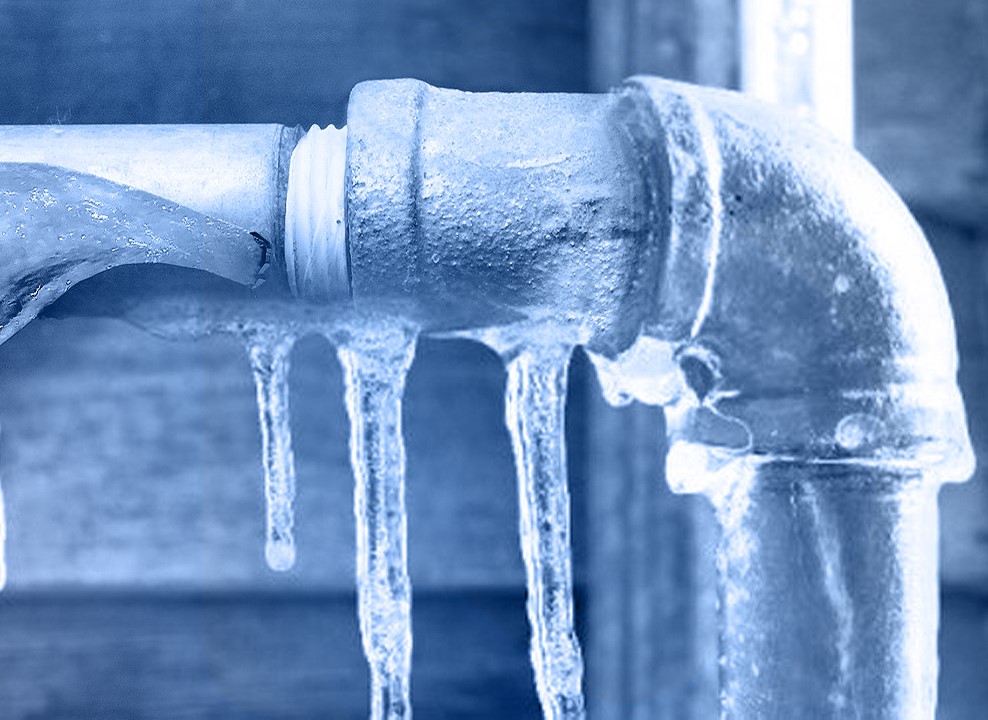Avoiding Frozen Plumbing in Winter: Professional Strategies
Avoiding Frozen Plumbing in Winter: Professional Strategies
Blog Article
The content following next about How to prepare your home plumbing for winter weather is really motivating. You should give it a look.
:strip_icc()/snow-outdoor-faucet-pipes-4af65d1e5e904fb1aa7bf74071fe5d89.jpg)
Winter can ruin your pipes, specifically by freezing pipelines. Here's how to prevent it from happening and what to do if it does.
Intro
As temperature levels decline, the threat of icy pipes increases, potentially leading to pricey fixings and water damages. Comprehending how to stop icy pipes is important for house owners in chilly climates.
Prevention Tips
Protecting vulnerable pipes
Cover pipelines in insulation sleeves or use warmth tape to shield them from freezing temperature levels. Focus on pipes in unheated or external areas of the home.
Heating strategies
Keep indoor areas appropriately heated up, specifically locations with plumbing. Open up cabinet doors to enable cozy air to distribute around pipelines under sinks.
Just how to determine icy pipelines
Look for reduced water circulation from faucets, uncommon odors or noises from pipes, and noticeable frost on revealed pipelines.
Long-Term Solutions
Structural modifications
Think about rerouting pipelines far from outside wall surfaces or unheated locations. Include added insulation to attic rooms, cellars, and crawl spaces.
Updating insulation
Purchase high-grade insulation for pipelines, attic rooms, and wall surfaces. Correct insulation assists preserve consistent temperature levels and minimizes the threat of icy pipelines.
Securing Outside Pipes
Yard pipes and outside taps
Separate and drain pipes garden hose pipes before winter months. Mount frost-proof spigots or cover outdoor faucets with protected caps.
Comprehending Frozen Pipelines
What triggers pipelines to freeze?
Pipelines freeze when revealed to temperatures below 32 ° F (0 ° C) for extended periods. As water inside the pipes freezes, it broadens, putting pressure on the pipeline wall surfaces and potentially triggering them to rupture.
Dangers and damages
Frozen pipes can bring about supply of water disturbances, home damages, and costly fixings. Ruptured pipelines can flood homes and trigger substantial architectural damages.
Signs of Frozen Water Lines
Recognizing icy pipelines early can avoid them from rupturing.
What to Do If Your Pipes Freeze
Immediate actions to take
If you believe icy pipes, maintain faucets open to alleviate pressure as the ice thaws. Utilize a hairdryer or towels soaked in warm water to thaw pipes slowly.
Verdict
Stopping frozen pipelines needs aggressive procedures and fast reactions. By recognizing the causes, indications, and safety nets, property owners can secure their pipes during cold weather.
6 Proven Ways to Prevent Frozen Pipes and Protect Your Home
Disconnect and Drain Garden Hoses
Before winter arrives, start by disconnecting your garden hoses and draining any remaining water. Close the shut-off valves that supply outdoor hose bibs and leave the outdoor faucet open to allow any residual water to drain. For extra protection, consider using faucet covers throughout the colder months. It’s also important to drain water from any sprinkler supply lines following the manufacturer’s directions.
Insulate Exposed Pipes
Insulating your pipes is an effective way to prevent freezing. Pipe insulation is readily available at home improvement stores and is relatively inexpensive. Pay close attention to pipes in unheated areas such as the attic, basement, crawl spaces, or garage. Apply foam insulation generously to create a buffer against the cold. You can also wrap your pipes in heat tape or thermostat-controlled heat cables for added warmth.
Seal Air Leaks
Inspect your home for any cracks or openings that could let in cold air. Seal any holes around the piping in interior or exterior walls, as well as the sill plates where your home rests on its foundation. Additionally, make sure to keep your garage door closed unless you’re entering or exiting. Leaving it open creates a significant air leak that can lead to frozen pipes.
Allow Warm Air Circulation
During cold snaps, it’s essential to allow warm air to circulate evenly throughout your home. Leave interior doors ajar to promote better airflow. Open kitchen and bathroom cabinets to help distribute heat consistently around the rooms. If you have small children or pets, be sure to remove any household chemicals or potentially harmful cleaners from open cabinets for safety.
Let Faucets Drip
A small trickle of water can make a big difference in preventing ice formation inside your pipes. When temperatures drop significantly, start a drip of water from all faucets served by exposed pipes. This continuous flow helps prevent the water from freezing. Additionally, running a few faucets slightly can relieve pressure inside the pipes, reducing the chances of a rupture if the water inside does freeze.
https://choateshvac.com/6-proven-ways-to-prevent-frozen-pipes-and-protect-your-home/

I discovered that review about How to prepare your home plumbing for winter weather while browsing on the internet. For those who liked our blog entry please remember to pass it around. Thank you for taking the time to read it.
Schedule Appointment Report this page